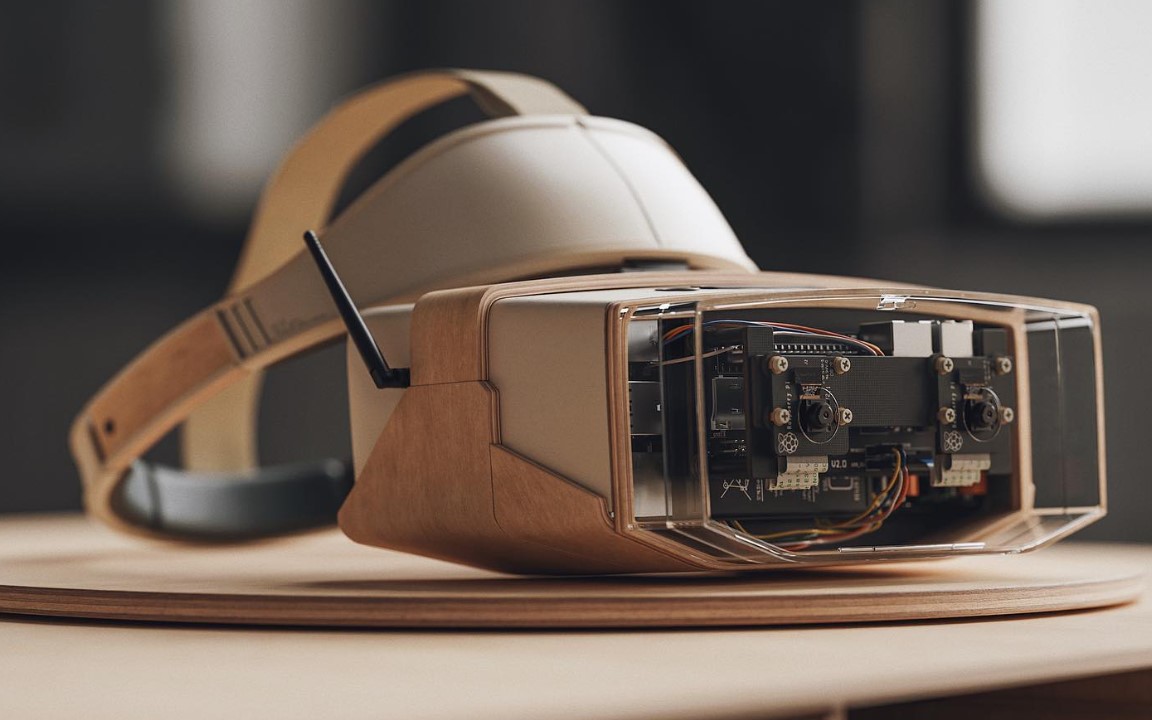
This Raspberry Pi VR Headset is Virtually From the 1990s
In the 1990s Virtual Reality headsets were big and bulky. Powered by Commodore Amiga 3000s, “Virtuality” headsets contained just the tech to see the virtual world, the processing power was housed in a pod beneath your feet. But what if the Raspberry Pi was around in the 1990s? This idea was realised by Freelance CGI artist Moonshake3D who created a fully rendered 64-bit VR gaming system “Moonshake Stereoscopic Display System” powered by our favorite single board computer.
So lets get this out of the way. The Moonshake Stereoscopic Display System renders are gorgeous, they look almost too good to be true. The mix of materials, plywood, leather and acrylic sells the latter 20th century aesthetic. We would wear one in a heartbeat. The tech side of things sees two virtual Raspberry Pi cameras. Not the latest Camera Module 3, instead the render shows two Camera Module 2 units running as a stereoscopic display system. Two official Raspberry Pi cameras connected to one Raspberry Pi? Well a normal Raspberry Pi can only have one camera, so this rendered product must be running a Compute Module unit. Compute Module IO boards have multiple camera connections, and libcamera can be instructed to individually control each camera. The typical Compute Module IO Board is rather large, largely due to its dev kit role. Developers are expected to use the IO board to develop their own Compute Module powered boards. In the render we can see something of a virtual circuit board. To the left looks to be a microSD card slot, to the right are some silver ports which could be USB. The electronics on the front of the unit are exposed to the elements, great for us to gaze upon their beauty, but bad for protection. Luckily this is just a render and not a real product.
The headset is rendered with a general plywood construction, and that extends to where the user’s face meets the unit. There is no padding for the face of our virtual gamer, but their head will be cushioned thanks to a pad on the back of the unit. The plywood on the bridge of the nose will be uncomfortable, but the texture used in the render is sublime and looks genuine. The Wi-Fi antenna sticking out of the unit means that the Compute Module 4 has Wi-Fi, and reminds us so much of 90s Sci-Fi TV shows.
This may not be a real product, but the care and attention poured into the render is evident and makes us reach for Blender to try our hand. If it ever becomes real, our cash is waiting for the call.

